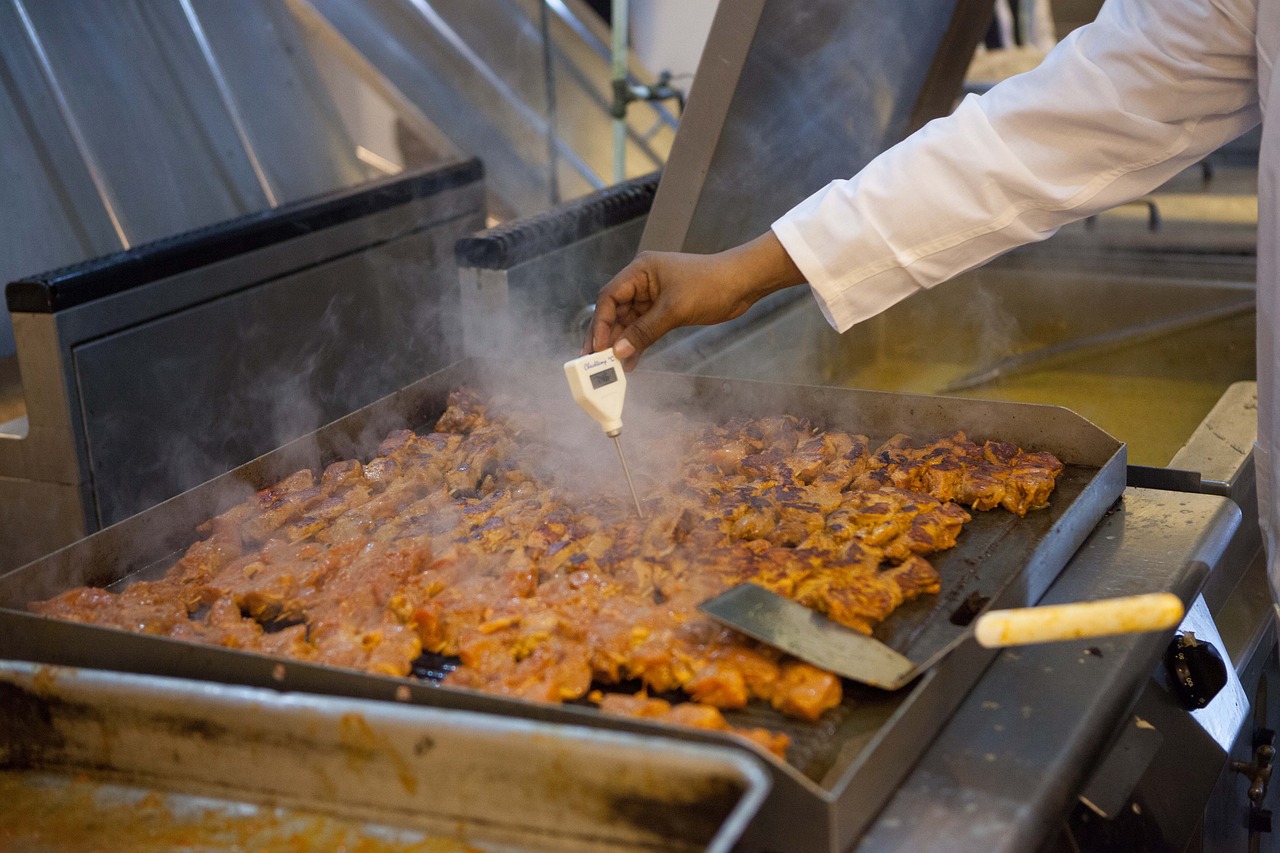The Truth About Food Temperature Safety (and a Secret Method for the Juiciest Chicken in the World)

You should probably cook your food to a safe temperature so that you don’t die of salmonella. That’s just a bit of street wisdom. You’re welcome.
The FDA agrees, so for your convenience (and to safely regulate restaurants), they’ve published a chart of minimum temperatures you must cook your meat to before they’re considered safe for consumption. Consider the following:
- 165℉: Chicken / poultry, casseroles, and leftovers.
- 160℉: Ground meat / sausage, rabbit
- 145℉: Steaks, chops, and roasts (be it veal, beef, pork, lamb, venison, goat, etc)
The above is all true. If you cook your foods to the above temperatures, they will be completely safe for human consumption.
Now here’s the interesting bit:
The Food Safety Guidelines are often misunderstood, and it really shows in the quality of our food
Before anyone freaks out and tries to get my food handler’s license revoked, bear in mind that I’m not advocating for anyone to disregard the food safety standards or practice anything dangerous. I’m simply trying to increase our understanding of temperature safety so that you can make your food even better.There are two ways that food temperature safety is misunderstood:
First, sometimes you want to cook your food quite a bit hotter than its safe consumption point. Just because the bacteria is dead doesn’t mean the meat is in its ideal state. This is the case for tough cuts of meat like chuck roast, pork butt, brisket, ribs, and chicken / turkey thighs. It’s also the case with baked potatoes. Sure, maybe you could technically eat that chuck roast once it hits 140℉, and it won’t kill you. But as you chew that hunk of leather, it’ll make you want to die.
This is because tough cuts of meat have more than protein bundles in them. They’re held together by sinews, cartilage, and other connective tissue. When exposed to enough heat, these fibers gelatinize, turning into a sleek, juicy lubricant that renders the meat incredibly succulent. This is why Texas brisket is so famous. But here’s the thing: none of that will happen until your meat has hung out at about 203℉. So if you were to simply poke your thermometer into the meat and say, “Oh great, it’s ‘safe to eat,’” then congratulations: you’re about to get a jaw workout, and nobody will come to your next barbecue.
Second, you can actually go below the “safe cooking temperature,” and it’s FDA approved! First off, why would you want to do this? Some cuts of meat are delicate and don’t need high cooking temperatures. This includes fish, chicken breasts, and well-marbled steaks. Cooking these meats doesn’t gelatinize much connective tissue, because there isn’t much connective tissue. The more you cook these meats, the more they just lose water. So when you overcook these meats, they become dry, bland, and hard to chew. This gives us an incentive to cook these meats to as low a temperature as safely possible.
We’re not making medium-rare chicken here. We’re just getting our meat up to temperature in a more gentle way.
What the heck are you talking about?
Simple! Food safety isn’t just a result of reaching the right temperature. It’s a product of both temperature and time. Check out this chart:| Degrees (℉) | Time for Chicken | Time for Turkey | Time for Beef |
|---|---|---|---|
| 135 | 63.3 minutes | 64 minutes | 37 minutes |
| 140 | 25.2 minutes | 28.1 minutes | 12 minutes |
| 145 | 8.4 minutes | 10.5 minutes | 4 minutes |
| 150 | 2.7 minutes | 3.8 minutes | 72 seconds |
| 155 | 44.2 seconds | 1.2 minutes | 23 seconds |
| 160 | 13.7 seconds | 25.6 seconds | Instantaneous |
| 165 | Instantaneous | Instantaneous | Instantaneous |
This is a concept introduced to me by Ethan Chlebowski, a rising star on YouTube. It’s pretty straightforward: you can cook your chicken to 165℉ and risk having some very dry chicken. Or you can cook your chicken to 155℉, hold it there for just under a minute, and end up with perfectly juicy chicken.
That’s it, it’s that simple.
 Matthew Christensen
Matthew Christensen
Weekly Newsletter Contributor since 2023
Email the author! matthew@dvo.com
